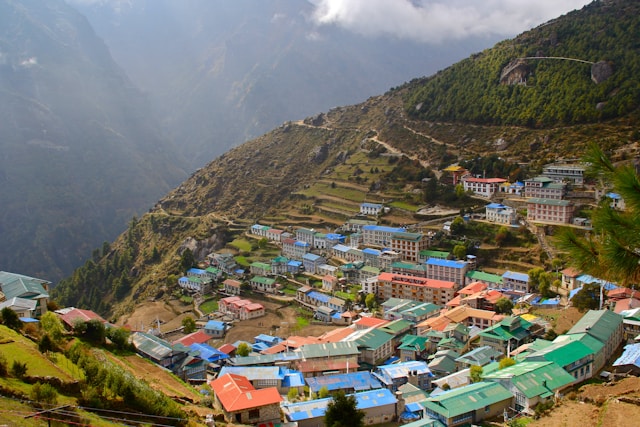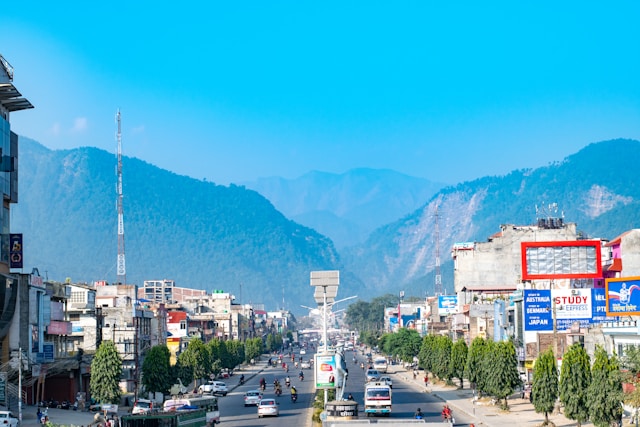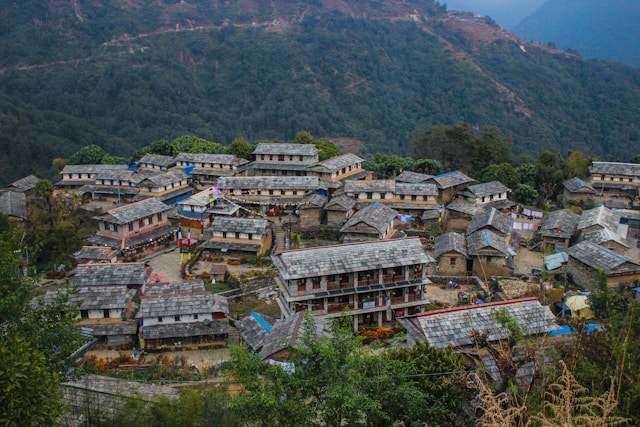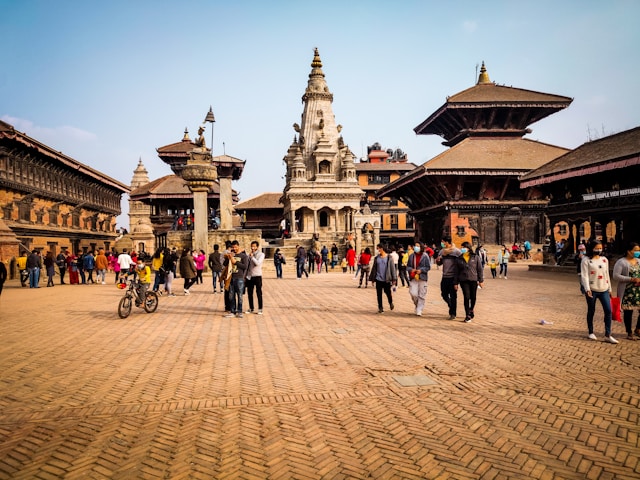Nestled in the heart of the Khumbu region, Namche Bazaar is more than just a bustling Sherpa town; it is a gateway to extraordinary nature trails that captivate every trekker’s soul. As we venture through these paths, we find ourselves surrounded by soaring peaks, ancient forests, and timeless Himalayan culture. These trails do not merely lead to destinations but unravel layers of Nepal’s natural and cultural heritage with every step.
The Legendary Namche to Khumjung Trail: A Cultural and Scenic Wonder
Starting from the vibrant market square of Namche Bazaar, the trail to Khumjung unfolds a panoramic journey across the Khumbu Valley. As we ascend gentle stone paths lined with colorful prayer flags, we traverse through rhododendron and pine forests alive with the songs of Himalayan monals. This route offers jaw-dropping views of Ama Dablam, Everest, and Thamserku, their icy summits glittering in the clear mountain air.
The trail winds to Khumjung Village, home to the famous Khumjung Monastery, where locals proudly display what they claim to be a Yeti scalp—a piece of Himalayan folklore that adds mystique to the journey. Khumjung itself is a Sherpa cultural gem, with traditional stone houses and fields carved from the rugged mountainsides, offering a glimpse into a way of life honed over centuries.
Syangboche Panorama Hike: A Trail to Everest’s Balcony
A trekker’s heart truly soars on the trail to Syangboche, which offers one of the most iconic vistas of Everest. Starting from Namche Bazaar, we ascend to the Syangboche airstrip—the highest in the world—where the landscape bursts open into a panorama of Himalayan giants. Here, Everest, Lhotse, and Nuptse rise majestically above the valley floor, forming an unforgettable backdrop for trekkers who pause to catch their breath.
Continuing beyond Syangboche, we arrive at the Everest View Hotel, one of the highest hotels on Earth, where we can sip warm tea while basking in unparalleled mountain scenery. Along this trail, the sharp scent of juniper fills the air, and agile Himalayan tahr can sometimes be seen leaping across cliffs.
Namche to Thame Trail: Into the Remote Heart of Sherpa Heritage
The Namche to Thame route leads westward along the tranquil Bhote Koshi River, away from the main Everest Base Camp trail, and into a landscape of profound serenity. This ancient trade route to Tibet passes through picturesque villages, mani walls etched with Buddhist prayers, and quiet stretches of conifer forests. Snow-capped peaks like Kongde Ri dominate the horizon as we enter Thame, a village known as the birthplace of several legendary Sherpa climbers, including Tenzing Norgay.

Thame Monastery, perched on a cliff, radiates an aura of peace and mysticism. During the Mani Rimdu festival, this monastery becomes the center of spiritual celebration, its courtyards alive with masked dances that reenact the eternal struggle of good over evil. This trail is a journey into the untouched soul of the Himalayas, where traditions are preserved amidst breathtaking wilderness.
Everest National Park’s Hidden Gems: Sundar Peak and Tesho Hill
For trekkers seeking off-the-beaten-path experiences, Sundar Peak and Tesho Hill near Namche offer secret escapes with rewards of solitary beauty. Trails meander through lichen-draped forests, opening suddenly onto ridgelines that provide sweeping views of the entire Khumbu range. Sundar Peak, true to its name meaning “beautiful” in Nepali, offers a sunrise spectacle where the mountains ignite in hues of gold and crimson, etching themselves forever into our memory.
Along these lesser-known trails, we may encounter herds of Himalayan blue sheep and hear the distant call of blood pheasants, reminders of the region’s rich biodiversity. Wildflowers bloom vibrantly in spring, carpeting the alpine meadows with colors rarely seen elsewhere in the Himalayas.
Ecological and Cultural Richness of Namche’s Trails
Namche Bazaar’s nature trails traverse landscapes of extraordinary ecological diversity, from lush forests of fir and rhododendron to high alpine tundra above 4,000 meters. These habitats are sanctuaries for endangered species such as the elusive snow leopard, musk deer, and Himalayan monal, Nepal’s national bird whose iridescent plumage gleams in the morning light.
Equally compelling is the cultural richness that pulses through these trails. Prayer wheels spin in the wind, ancient chortens guard the paths, and Buddhist mantras carved into stones whisper blessings to those who pass by. The Sherpa people’s warmth and resilience shine through in their villages, where life continues harmoniously amidst some of the world’s harshest yet most awe-inspiring environments.
Best Times to Hike: Seasons of Transformation
Each season casts Namche’s nature trails in a unique light. Spring brings blooming rhododendrons and migrating birds, while autumn unveils crystal-clear skies that sharpen the grandeur of the mountains. In winter, snow transforms the landscape into a serene, white wonderland, ideal for photographers and solitude seekers. Even during the monsoon, when fewer trekkers venture forth, the mist swirling through valleys creates a mystical atmosphere that feels like stepping into a Himalayan dream.
Practical Tips for Exploring Namche Bazaar’s Trails
Proper preparation ensures safe and rewarding adventures. Acclimatization is key; Namche Bazaar itself is a popular rest point to adapt before heading higher. Trekkers should carry layers for rapidly changing weather and be mindful of altitude sickness symptoms. Hiring experienced local guides not only enhances safety but also deepens our understanding of the region’s culture and history.
Respect for local customs, minimizing waste, and supporting eco-friendly lodges help preserve the fragile environment. Trekkers are encouraged to carry reusable water bottles, avoid single-use plastics, and stay on marked trails to protect the delicate alpine ecosystem.
Conclusion: A Trekker’s Timeless Sanctuary
Namche Bazaar’s nature trails offer an unrivaled tapestry of adventure, culture, and natural beauty. These paths are more than trekking routes—they are timeless sanctuaries where the Himalayas reveal their profound secrets to those willing to walk quietly and listen. From the grandeur of Everest’s skyline to the intimate encounters with Sherpa heritage, every trail promises a journey of discovery, reflection, and awe.


